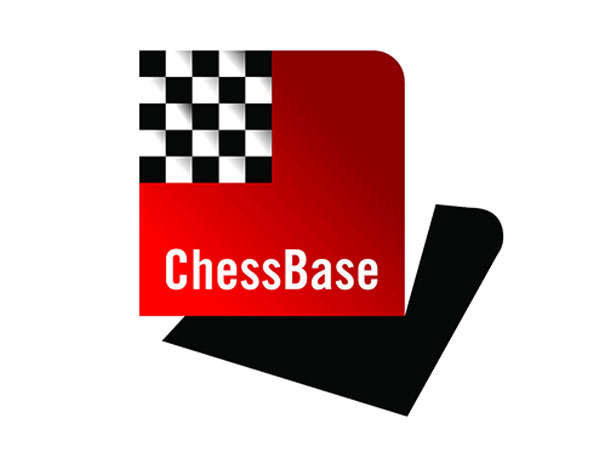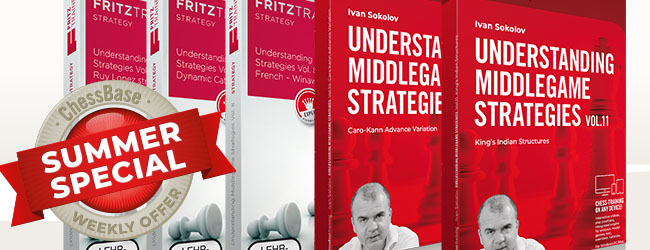
The Finals of the Candidates Matches for the 2007 World Chess Championship
Tournament are being held in Elista, Russia, from June 6th to June 14, 2007.
Eight candidates advanced from the first stage and are now playing six-game
matches to fill four places in the 2007
World Championship in Mexico City. The prize fund is US $40,000 per match,
most of the money ($320,000) coming from a personal fund of FIDE President Kirsan
Ilyumzhinov, FIDE ($160,000) and the general sponsor, Rosenergomash.
The following express commentary was provided by Romanian GM Mihail Marin,
who is the author of a number of very popular ChessBase training CDs and articles
for ChessBase Magazine. GM Marin will study the games of the Candidates Finals
in greater detail and provide the full results of his analysis in the next issue
of ChessBase
Magazine.
Candidates Finals: Round two commentary
By GM Mihail Marin
From the narrow perspective of the results (four draws), this could look like
a boring day, especially if we compare with the first round. However, there
was a lot of entertainment today, too. True, Rublevsky and Bareev did not seem
too determined to reestablish the equality and their games with White against
Grischuk and Leko, respectively, ended peacefully without too much fight. However,
the other two games were much more exciting.
For a long while, Gelfand-Kamsky looked like a one-way business, with White
gradually building up his pressure by means of subtle manoeuvring. However,
Kamsky calmly maintained things under control, castled artificially and started
a well-timed counterplay in the centre. After a short tactical phase, the position
was simplified, entering the "Sofia rule" patterns quite soon.
Shirov set up "fire on board" from a very early stage of the game,
by employing an increasingly popular pawn sacrifice. In order to extinguish
the fire, Aronian sacrificed his queen, transposing to a highly interesting
endgame. At a certain point, it became rather unclear which of the sides was
really playing for a win, but the battery R + 2Bs eventually proved strong enough
for just a perpetual check
Shirov,A (2699) - Aronian,L (2759) [E15]
WCh Candidates Finals Elista RUS (2), 07.05.2007 [Mihail Marin]
1.d4 Nf6 2.c4 e6 3.Nf3 b6 4.g3 Ba6 5.Qc2 Bb7 6.Bg2 c5 7.d5 exd5 8.cxd5
Nxd5 9.0-0 Be7 10.Rd1 Nc6
This sacrificial line has become fashionable after Gelfand's recent wins over
Aronian (!) and Leko. Apart from his own (sad) experience, Aronian had an additional
reason to be prepared against such a course of events: Dieter Nisipeanu, who is
Shirov's second in Elista, scored a convincing win against Baklan last year.
11.Qa4.
A new move. Just few days earlier, Bareev played 11.Qf5 against Judit.
11...Nf6
12.Nc3 0-0.
13.g4! The key to the position consists of Black's weaknesses along the
d-file (the d5-square in first line). The apparently extravagant advance of the
g-pawn aims to undermine Black's control over this square.
13...Nb4 14.a3 Nbd5
15.Nxd5 Bxd5. 15...Nxd5? would fail painfully after 16.Ne5.
16.g5 Bc6
17.Qh4. White prevents ...Nh5, but the queen will be left slightly misplaced
after the following exchanges.
17...Ne8 18.Ne5 Bxg2 19.Rxd7 Bb7! Aronian
is ready to sacrifice material himself for the sake of calming down White's initiative.
19...Qc8 20.Rxe7 does not look too appealing for Black.
20.Rxd8 Rxd8 21.Be3
Rd5 22.Nf3 Nd6 23.Qa4 b5 24.Qc2 Nf5
Black has considerably activated his play and threatens to take over the authoritarian
control of the d-file. Shirov decides that this would be too much and allows his
structure to be deteriorated in radical way.
25.a4 b4 26.Rd1 Rxd1+ 27.Qxd1
Nxe3 28.fxe3 Rd8 29.Qc2 g6
An interesting position with rather unusual material balance. Optically, I would
enjoy playing with Black, but the queen should not be underestimated.
30.h4
Bd6. From the perspective of the further events, this might look as a loss
of time. However, with the knight on f3 still, it was important to keep the e5-square
under control. If 30...Bf8 then 31.Ne5 , when the knight could choose between
such nice squares as g4, c6 or c4, depending on Black's answer.
31.Kf2.
The attempt to transfer the knight to g4 with 31.Nh2 can be answered with 31...Bc8]
31...a6 [However, the refinement of this move beats me. The immediate
31...Bc8 looks entirely OK.
32.Nd2 Bf8 33.Nc4
White has stabilized the queenside and can dream about opening the kingside by
a resolute advance of the e3-pawn.
33...Bc8! Radically preventing the aforementioned
plan. besides, once the bishop will emerge on g7 and e6, the white b-pawn will
never enjoy absolute safety...
34.Qe4 Be6 35.b3 Rd5 36.Kg3
36...h6!? White did not have an obvious active plan at his disposal. However,
having achieved a maximum of piece activity, Aronian correctly decides that it
is time to open the position.
37.gxh6 Bxh6 38.Qf3 Kh7 39.e4 Rh5 40.Nd6
40...Bg5! After this unexpected blow, White's king starts feeling insecure.
The bishop is taboo because of ...Rh3+. 41.Nxf7 Bxh4+ 42.Kg2 c4 43.bxc4 Kg8
44.Nd6 Rg5+ 45.Kh1 Rg3 46.Qf4 Rh3+ With his pieces hanging, Black cannot
hope for more than a perpetual. It is also easy to see that the king has no
escape towards the queenside. Therefore, draw. 1/2-1/2. [Click
to replay]
Gelfand,B (2733) - Kamsky,G (2705) [D15]
WCh Candidates Finals Elista RUS (2), 07.05.2007 [Mihail Marin]
1.d4 d5 2.c4 c6 3.Nc3 Nf6 4.Nf3 a6 5.a4 e6 6.Bg5 Nbd7 7.e3 Qa5 8.cxd5 exd5
9.Bd3 Ne4 10.0-0 Nxg5 11.Nxg5 Be7

12.f4!? This move, typical for what is called "The Pillsbury Attack",
is usually played with the knight on e5. By maintaining his knight on g5 for
a couple of moves, Gelfand will induce a small weakness in Black's kingside
structure. 12...Nf6 13.Qc2 h6 14.Nf3 Be6 15.Ne5. Once the h-pawn has
advanced, the knight has increased its stability on e5. Indeed, in case of a
further ...f6, it will be able to jump to g6. 15...Rd8. Kamsky does not
rush with his king to the weakened kingside and plays a generally useful move
instead. 16.h3. This move, preparing a pawn attack with g4, but weakening
the g3-square, looks premature. I believe that more flexible would have been
16.Kh1 or 16.Rae1, because Black has more or less finished his useful moves
and has to define his intentions already. In case of 16...0-0 White could have
already played 17.h3 , or even the immediate 17.g4!? 16...h5! The relative
weakness of the white kingside offers Black a clear plan of regroupment now.
17.Nf3!? Black's last move has created a weakness of his own, too (g5)
and White immediately adjusts his general plan. 17...Kf8 18.Ng5 Bd7 19.Rae1.
Threatening to open the centre with e4. 19...Qb4 Preventing the threat
by attacking the d4-pawn, but allowing White to start active operations on the
apparently inert queenside.. 20.Na2 Qb6

21.b4! a5. After 21...Bxb4 22.Rb1 a5 23.Nxb4 axb4 24.Qd2 White will soon
invade the weak queenside dark squares.
22.bxa5. With his knights placed
away from the centre, White is not prepared to continue his minority's attack
with 22.b5 because of the counter-blow 22...c5.
22...Qxa5 23.Rb1. The start
of a general regroupment. All the pieces will migrate towards the queenside. Although
after the elimination of the b-pawn White cannot undermine the c6-pawn any more,
he has obtained a new target: the b7-pawn.
23...Qa7 24.Nc3 Rh6 25.Qb3 Rb8 26.Nf3.
This goes for this wandering knight, too.
26...Be8 27.Ne5 Bd6 28.Rf2
28...Ng8! A key move in Black's regroupment. The king's rook's communication
with the queenside is enabled, while the knight is re-directed towards such
juicy squares as f5 and g3. 29.Rfb2 Ne7

30.Qc2?! Having completed the first wave of queenside mobilization,
Gelfand unexpectedly starts to retreat with his pieces. The active 30.Qb6 Qa8
(The only way to save the b7-pawn, at least temporarily.) 31.a5 looks more logical,
but he might have feared 31...c5 , when his queen would have suddenly been exposed
to the rook's indirect attack. However, after 32.Ng6+! Rxg6 33.Bxg6 Nc8 34.Qd8
White would have retained the initiative in a rather sharp position.; Another
interesting line after 30.Qb6 Qa8 31.a5 would be 31...f6?! (Not really consequent,
because it leaves the h6-rook temporarily out of play) 32.a6! fxe5 33.fxe5!?
(33.axb7 looks OK, too.) 33...bxa6 34.Qxb8 Bxb8 35.Rxb8 Qa7 36.R1b7
and after having trapped the queen, WHite retains considerable positional advantage.
30...Kg8 31.Nf3?! For once, this knight's jump is harder to understand.
31...Bd7 32.Rb3 c5. Black will obtain sufficient counterplay now. 33.Nb5
Bxb5 34.Rxb5 cxd4 35.exd4 Bxf4 36.Qb3 Rc6 37.Rxb7 Rc1+ 38.Kf2 Rxb1 39.Rxb8+
Qxb8 40.Qxb1 Bg3+ 41.Ke2 Qe8 42.Qb5 Nc6+ 43.Kd2 Bf4+ 44.Kc3 Qd7

45.a5 g5 This pawn race will lead to final simplifications. 46.a6
g4 47.hxg4 hxg4 48.Ne5 Nxe5 49.Qxd7 Nxd7 50.a7 Nb6 51.Bb5 Bd6 1/2-1/2. [Click
to replay]
Bareev,E (2643) - Leko,P (2738) [D11]
WCh Candidates Finals Elista RUS (2), 07.05.2007 [Mihail Marin]
1.d4 d5 2.c4 c6 Prior to this game, Leko has played the Slav only occasionally.
However, Bareev's match against Judit proved that he feels very much at home
against the Queen's Indian, which entirely justifies the Hungarian GM's decision
to deviate from his main repertoire. 3.Nf3 Nf6 4.e3 Bg4. Not really
the main theoretical stream. We had a lot of the main continuation 4...Bf5 during
the Kramnik-Topalov match. 5.Nc3 e6 6.h3 Bxf3 7.Qxf3 Nbd7
8.Bd2. I do not like this move. I belive that White should play 8.Bd3
, then get castled and regroup with Rd1 and Bf1, in order to prevent Black's thematical
break ...e5. The development of the queenside could wait for the time being.
8...Bb4
9.Bd3 0-0 10.a3 Ba5 11.b4. White wins space on the queenside, but weakens
the c4-square and drives the enemy bishop on a better square.
11...Bc7 12.cxd5.
The necessity of releasing the tension in the centre so soon speaks against
White's strategy in the previous phase of the game. It appears that the bishops
are hanging after 12.0-0 dxc4 13.Bxc4 Ne5!? , although 13...e5 is not bad either.;
12.Rd1 looks a bit unaesthetic, by leaving too much empty space on the queenside.
Besides, it only parries one of Black's main threats, allowing 12...dxc4 13.Bxc4
e5 .

Analysis diagram
It would be interesting to compare this position with that arising by replacing
Bd2 and Rad1 with 0-0 and Rfd1. Here, the generally desirable 14.d5?! does not
work because of 14...Nb6 and the d2-bishop clearly stands in the way.
12...cxd5. After 12...exd5?! 13.b5 White's pieces are well placed for
the minority's attack. 13.0-0 Re8. Black calmly prepares the opening
of the centre with ...e5. 14.Rfc1. By placing this rook on the c-file,
Bareev probably wanted to avoid the line 14.Rac1 e5 15.Nxd5 e4 16.Bxe4 Nxe4
17.Nxc7 Nxd2 when the f1-rook would be hanging. 14...Bd6 15.e4
After 15...e5 the position would be balanced, but it mainly depends on the
player's mood whether to play on or call it a day. In this game, they chose
the latter, much to the spectators' excitement. 1/2-1/2. [Click
to replay]
Rublevsky,S (2680) - Grischuk,A (2717) [C45]
WCh Candidates Finals Elista RUS (2), 07.05.2007 [Mihail Marin]
1.e4 e5 2.Nf3 Nc6 3.d4 exd4 4.Nxd4 Bc5 5.Be3 Qf6 6.c3 Nge7 7.Bc4 Ne5 8.Be2
Qg6 9.0-0 d6 10.f3 0-0 11.Nd2 d5 12.Kh1 dxe4
3.Nxe4. This move is not new, but Rublevsky did not employ it before.
He had repeatedly rehearsed 13.fxe4 Bg4 14.Bf4 Bxe2 15.Qxe2 Bd6 16.Rad1 Rae8
, but without any special successes. After the game continuation he will also
fail to prove anything concrete for White. On the basis of the first two games,
we can state that Grischuk has managed to spot the weak points in his opening
repertoire quite accurately. 13...Bb6 14.Re1 Bf5 15.Bf4 Bxe4 16.Bxe5 Nc6
17.Nxc6 Bxc6 18.Bd3 Qh5 1/2-1/2. [Click
to replay]
Links
























